#mekosuchian
Text
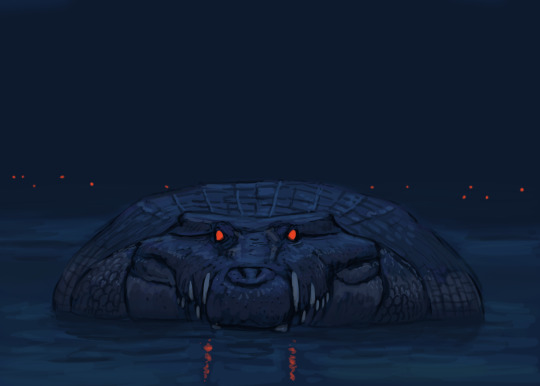
Another #paleostream sketch
Baru, a large, broad snooted, mekosuchians crocodile.
3K notes
·
View notes
Text
A speculative arboreal crocodylian

A year ago I began my research on the Mekosuchians, especially around the genus Mekosuchus and my already very strong skepticism at that time about the claims that they were tree-dwelling crocodiles (Something extremely improbable and which I may comment on another occasion. For now you can read in depth about Mekosuchus in this post by Armin).
At that point I wondered ; what would an arboreal crocodile really look like if it existed?
I decided that it would be a derived member of the subfamily Caimaninae, specifically belonging to the Jacarea clade (which includes all species of the genus Caiman and Melanosuchus).
The body has evolved in a convergentely with squamates such as Varanus salvator, being thinner and more elongated than that of any other crocodylian, following the same process the tail : Once the motor that propelled it underwater, is now becoming something similar to a whip that allows it to maintain balance on the branches, losing the characteristic single and double caudal crest whorls, to the point of almost disappearing.
The dorsal osteoderms are shrinking, but are still visible and play an important role in the ecology of the animal, helping it to thermoregulate.
The limbs have been considerably widened and strengthened, an adaptation very visible in the metatarsals of the hind legs, which, together with the sharp, curved claws they have developed, help the animal to cling effectively to trees.
The skull is the most distinctive part of all, as it has not only become shorter and more robust as a whole (Males have even developed an anteorbital crest similar to that of some members of the genus Crocodylus such as C. acutus or the extinct C. checchiai ; very likely some kind of sexual dimorphism), but it is developing unique characteristics such as binocular vision, zyphodont dentition and laterodorsally positioned nostrils, all of these attributes usually associated with terrestrial hunters (although there is not a necessary relationship in all cases), thus moving away from the semi-aquatic lifestyle.
Despite this, these crocodiles are still dependent on water to a certain extent, always inhabiting the forests near the rivers and being able to swim perfectly well if necessary, just like the extant iguanas and monitor lizards.
If I had to add some kind of worldbuilding that allows the existence of this animal, it would probably be located millions of years in the future : After a cataclysmic event related to climate change, South America has suffered a process of desertification in which large bodies of water have dried up, forcing the very abundant babas (Caiman crocodilus) to move into the remaining forests and jungles, adapting to a more terrestrial lifestyle. As an isolated population of these caimans chose the birds and monkeys as their preferred prey, they would gradually follow them to the treetops.
After a few more million years, the land has recovered, and large rivers and lakes are once again flooding South America, favoring the emergence of large tropical jungles again, opening a new world for these tree-dwelling caimans. Will they manage to adapt to the new climatic conditions or will they become extinct as a consequence of this and other factors such as the emergence of new species of placental predators that threaten to occupy their niche? Well, that is uncertain.
The illustration was made in gouache and watercolors during September 2022 . I scupted a small-basic figure made in clay to in order to facilitate the understanding of the lights and shadows.
Here are some pictures of the process:

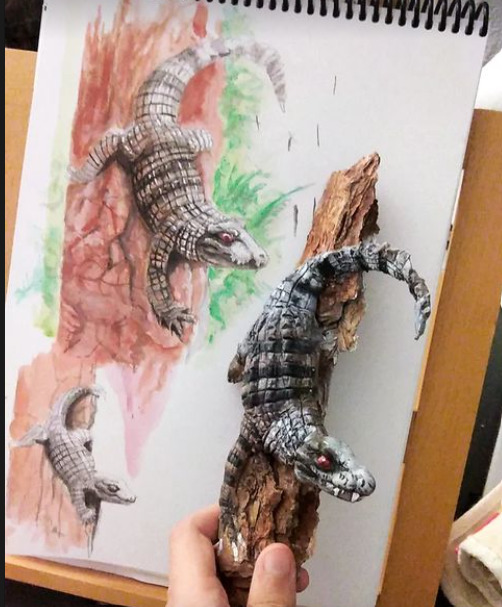
#animals#crocodiles#reptiles#zoology#crocodilians#paleoart#art#nature#speculative biology#speculative evolution#speculative zoology
230 notes
·
View notes
Text


And so the Riversleigh #paleostream concluded! Lots of weird marsupials in this one. Since we chose to depict here a Miocene faunal zone you will not come across your typical Australian megafauna, like Diprotodon and Dromornis, that stuff came later.
We are looking at their ancestors, before the rainforest collapse.
Here some detail shots. Next time we will visit the Kimmeridge clay, a late Jurassic marine ecosystem.


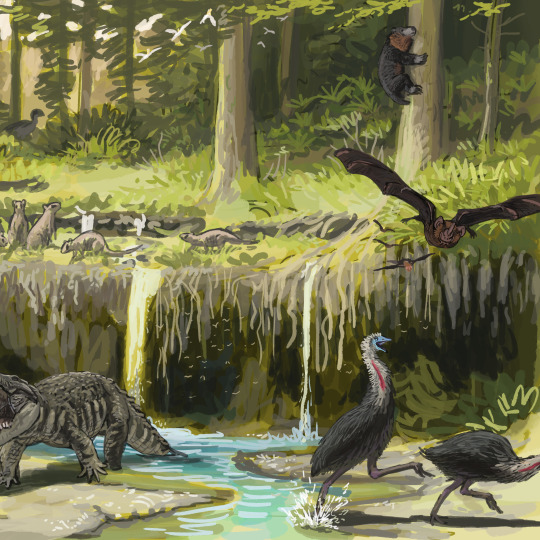
#sciart#paleoart#paleostream#palaeoblr#miocene#baru#crocodile#mekosuchian#marsupial#nimbadon#riversleigh#wakaleo
516 notes
·
View notes
Text
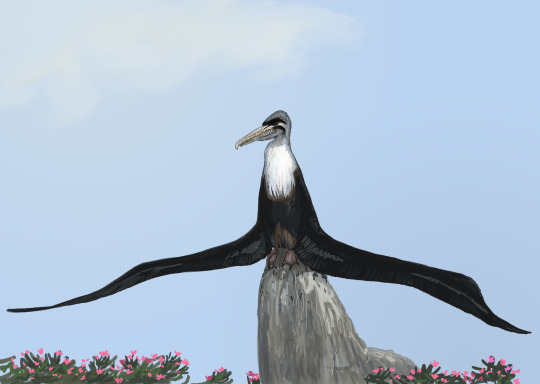
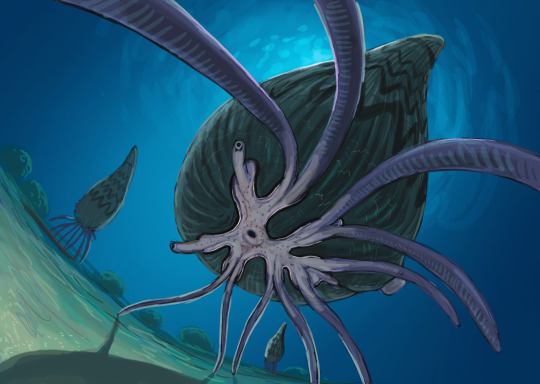


Results from the #paleostream
Pseudodontornis, Octamerella, Garumbatitan and Trilophosuchus
953 notes
·
View notes
Text
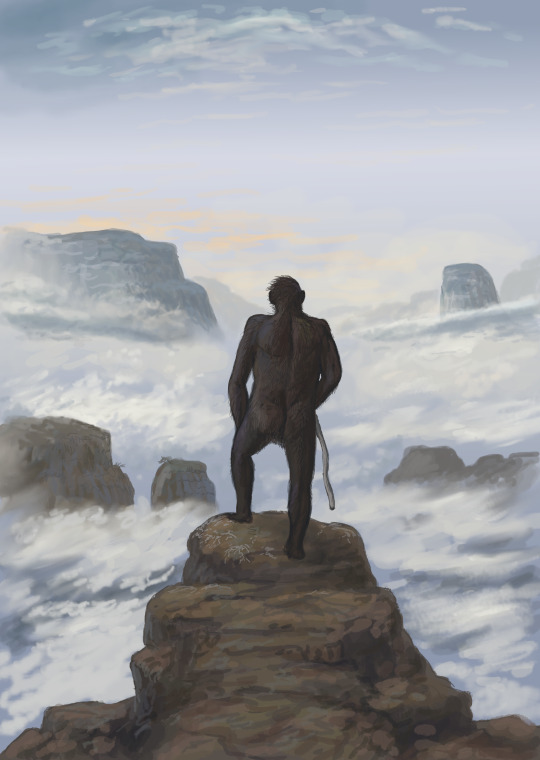
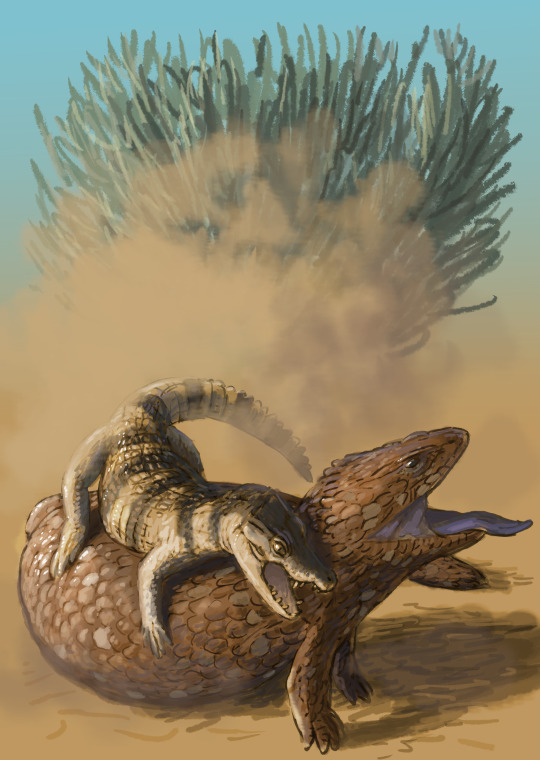


Results from the #paleostream
Australopithecus (a new #MonkeyCruise piece), Tiliqua (being attacked by a young mekosuchian), Sicanites and Eritherium, the oldest proboscidean.
#sciart#paleoart#paleostream#palaeoblr#ammonite#lizard#crocodile#australopicethus#monkeycruise#elephant
313 notes
·
View notes